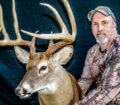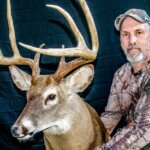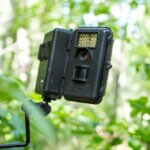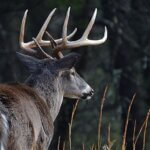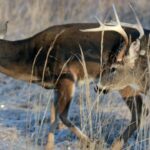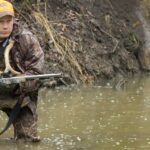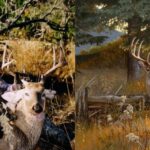Editor’s Note: Michael Perry of Vinemont, Alabama, a longtime, successful public-land deer hunter who’s taken more than 79 bucks on public lands through the years, with 38 of them being 8-pointers or better, explains, “My trail cameras are an integral part of my scouting program.” But Perry doesn’t use trail cameras like most deer hunters do. He’s only taken four bucks that he’s seen previously on trail camera pictures before he’s taken them. Perry says, “Most of these bucks I’ve taken, especially the most mature bucks, I’ve never seen before I’ve released my arrow or squeezed my trigger. However, my trail cameras have told me the trails are where those mature bucks are most likely to be.”
I’ve sometimes tried pinpointing specific touring bucks during the early season by putting a trail camera over a scrape. Even then, I rarely take the buck I hoped to take at that scrape. Most of the mature bucks I take will come into a region and use the scrapes already there to find an estrous doe to breed. Many of these bucks will often come from several miles away.

I’ve learned when I post pictures of bucks I’ve taken on my Facebook page that other hunters may have photos of these same bucks—perhaps a great distance away from where I’ve taken the buck. These bucks are usually what I define as roaming or touring bucks. They’re mature bucks, expanding their home ranges to try and find new does to breed. Because I’m hunting in big, deep woods where others aren’t hunting, I believe these bucks are traveling to move into new lands. Then they use the same trails that bucks in that region do to locate estrous does during the rut.
Scientific studies have shown that a buck’s home range is irregularly shaped, generally about one square mile, and is based on the available food, water, bedding, and climate. A buck’s core area, where he spends most of his time inside his home, ranges from 50 to 75 acres. Roaming (touring) bucks may react to hunting pressure and leave their home ranges.
An Auburn University study found that with greater hunting pressure, bucks were 50% less likely to move during daylight hours. QDMA research on 2-1/2- to 7-1/2-year-old bucks found they moved most at dawn and dusk. Texas researchers showed that during the rut, bucks had two places they generally focused on and revisited every 20 to 28 hours.
One of the mature bucks I took, I learned that another hunter had a picture of that same buck two nights before I took him. That hunter’s trail camera was six miles from where I took that buck.
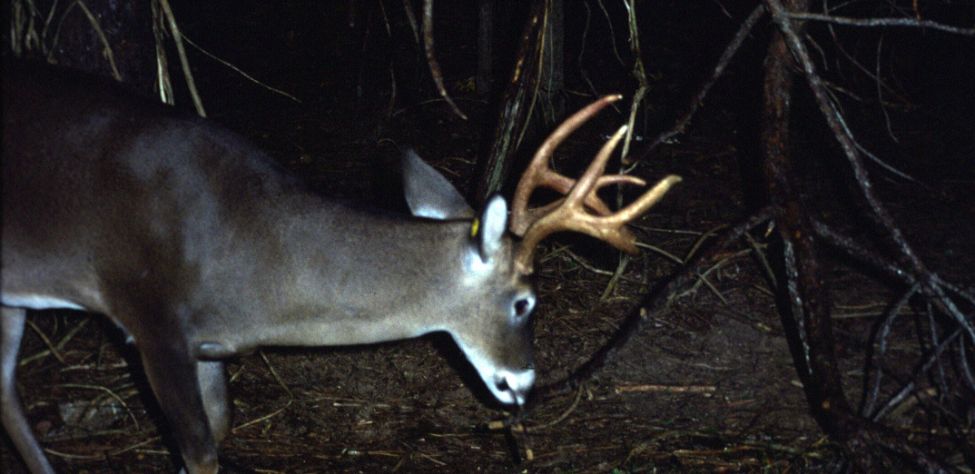
Although I don’t receive trail-camera pictures of most of the mature bucks I take, I generally do get trail-camera pictures of other bucks, often 2-3 years old, using the same trails that the really big bucks travel during the rut. One buck I had on a trail camera, and I received photos from the time he was 3 1/2 years old. I consistently got photos of him each year until he was 7 and 1/2 years old. However, I could never take him or hear of anyone else taking him. I never saw that buck in daylight hours, and I guess he just died of old age.
For me, the most significant benefit of trail cameras is giving me the confidence to know that bucks are using the trails, creek crossings, and/or other sites where I’ve set the cameras up. If I get a big-buck picture now and then, I’ll know I’m in the right area to take a trophy buck, possibly. Those trail-camera pictures also confirm that I may need to hunt from that same tree stand several times and/or at several times of the year, even if I’m not seeing the size of buck I want to take.
Looking for more content? Check out our YouTube channel and watch “Three Critical Factors to Locate Deer Movement” by John E. Phillips.
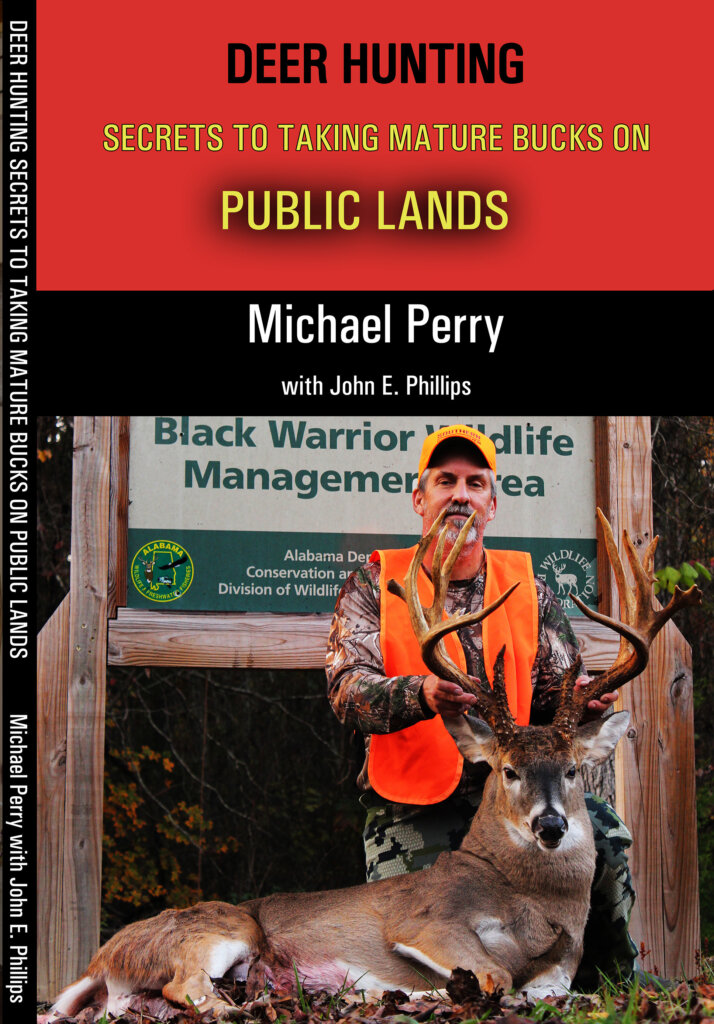

How to Hunt and Take Big Buck Deer on Small Properties
In this book, you’ll hear from 14 hunters who either have gained permission or leased properties as small as six acres to as much as 250 acres, and how they consistently take older-age-class bucks off these little lands.
VERSIONS: AUDIBLE, KINDLE & PRINT

Jim Crumley’s Secrets of Bowhunting Deer
Using a black magic marker and a gray work jumpsuit, Jim Crumley of Buchanan, Virginia, drastically changed the nature and purpose of hunting camouflage when he created the first sportsman’s camouflage – Trebark. Crumley’s love of bowhunting and his desire to be more invisible changed hunting clothing forever.
In this hunting guide, he shares the wisdom that he’s learned throughout his lifetime about how to be a hunter, how to find a deer lease, how to scout for deer, and more.
Special features include how to:
- Have a magic 60 acres to hunt
- Decide the best equipment to use
- Find deer year-round
- Locate land to hunt
- Know the best place to put your tree stand
- Get bucks within bow range
VERSIONS: AUDIBLE, KINDLE & PRINT

How to Hunt Deer Like a Pro
How do you know if the land you hunt has a trophy deer on it? Wildlife manager Bob Zaiglin, of Uvalde, Texas and Jim Crumley, the father of modern-day hunting camouflage, tells you how to find out. GPS can make finding and taking that trophy buck easier. This hunting guide will teach you how to hunt big bucks where no one else can find them, how to call deer, and how to become versatile as a deer hunter, so that if one deer tactic doesn’t work, another one will.
In the chapter, “How to find Bucks at Scrape,” Dr. Keith Causey, retired professor of Wildlife Science at Auburn University, describes the best way to hunt a scrape.
Brad Harrison of Neosho, Missouri, is a nationally-known videographer, professional deer hunter and master at calling deer. Another master is Will Primos of Primos Game Calls. These two experts will tell the best deer calls and when to use them in this book.
And for over 20 years, Bo Pitman, lodge manager of White Oak Plantation, has been studying deer movement patterns. He explains what types of conditions are best for predicting deer movement.
VERSIONS: AUDIBLE, KINDLE & PRINT

Deer hunting and deer hunters are drastically changing each year. To learn new techniques for hunting deer and have more places to hunt, I’ve interviewed some of the best deer hunters in the nation and share their tactics in How to Hunt Deer Like a Pro: Volume II.
In Chapter 10, Jacob Lamar tells you his tactics for consistently taking older-age-class bucks on public lands in several states. Chapter 11, Bob Walker explains how to find places on public lands where you can hunt that 99 percent of the other hunters never have considered hunting. The Bonus Chapter with David Ramey tells you how, where, when and with what equipment to take big Kansas bucks on public lands by hunting in 100-degree weather when others won’t hunt.
Chapter 13, Mark Drury, his family and his guests take mature bucks every season by having more small places to hunt rather than one large property. Drury explains the strategy of having satellite farms to hunt that only may be 50-150 acres each or less. Chapter 15, Pat Reeve, who hunts far-northern states and Canada, says, “I don’t like hunting for mature bucks until the weather is 20 degrees or less.” Chapter 4, Dr. Larry Marchinton says that funnels are the most-reliable stand sites to hunt for big bucks and tells why.
VERSIONS: AUDIBLE & PRINT
Tomorrow: What about Trail Camera Problems for Deer


